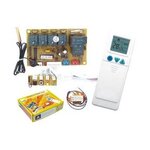abubaker-makki
Newbie level 1

- Joined
- Aug 7, 2014
- Messages
- 1
- Helped
- 0
- Reputation
- 0
- Reaction score
- 0
- Trophy points
- 1
- Activity points
- 8
hi
i read the last post in IR remote and how any one make him remote and that is nice work
but i have an unit Universal a c control system qd-u03c+ Air conditioner pcboard qunda double sensors like the picture i want to know the frequency of remote transmit ? and i want to interface this remote via pic micro controller using micro c what can i do please ?

thanks
i read the last post in IR remote and how any one make him remote and that is nice work
but i have an unit Universal a c control system qd-u03c+ Air conditioner pcboard qunda double sensors like the picture i want to know the frequency of remote transmit ? and i want to interface this remote via pic micro controller using micro c what can i do please ?

thanks
Last edited:

